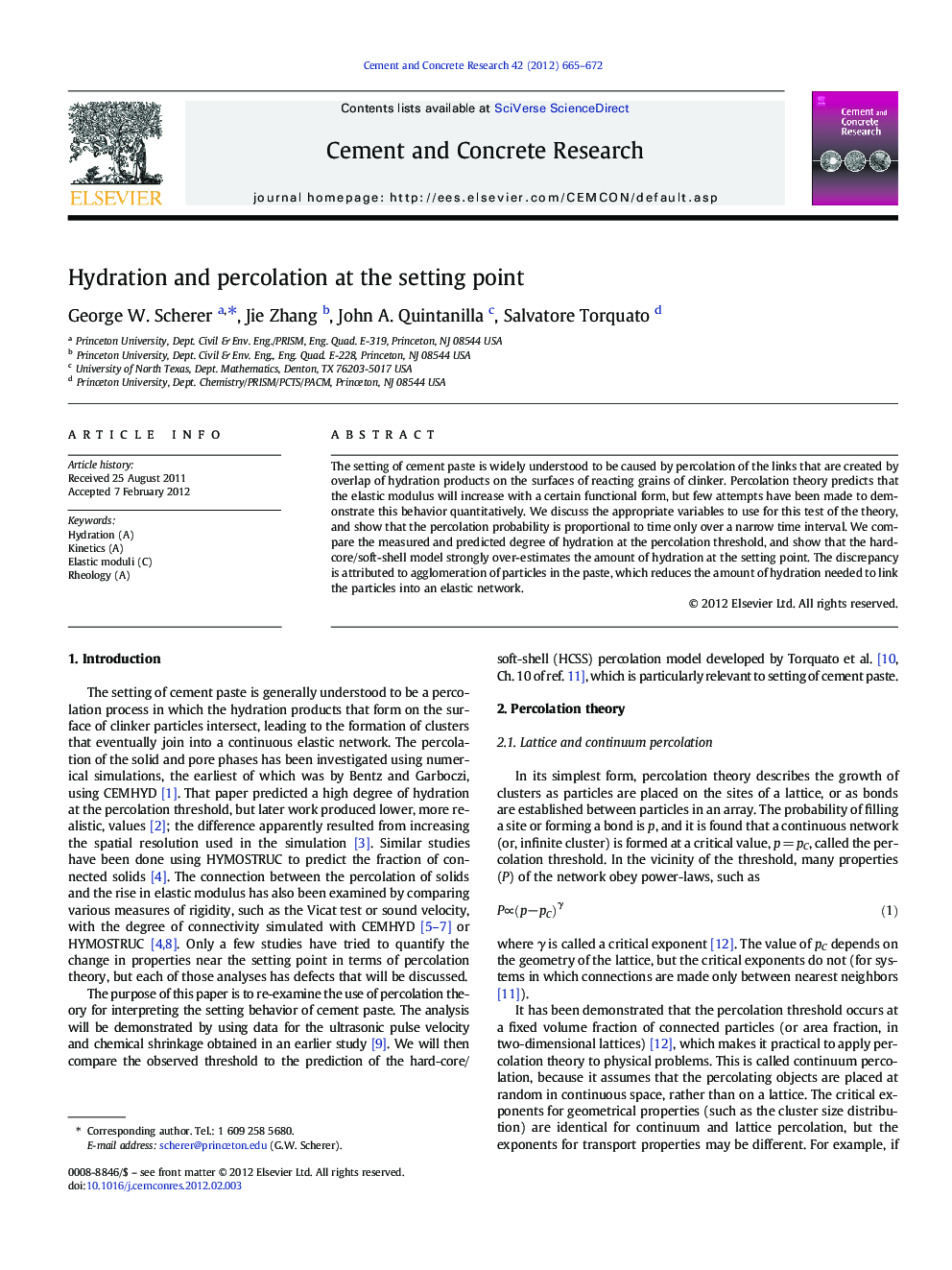| Article ID | Journal | Published Year | Pages | File Type |
|---|---|---|---|---|
| 1456814 | Cement and Concrete Research | 2012 | 8 Pages |
The setting of cement paste is widely understood to be caused by percolation of the links that are created by overlap of hydration products on the surfaces of reacting grains of clinker. Percolation theory predicts that the elastic modulus will increase with a certain functional form, but few attempts have been made to demonstrate this behavior quantitatively. We discuss the appropriate variables to use for this test of the theory, and show that the percolation probability is proportional to time only over a narrow time interval. We compare the measured and predicted degree of hydration at the percolation threshold, and show that the hard-core/soft-shell model strongly over-estimates the amount of hydration at the setting point. The discrepancy is attributed to agglomeration of particles in the paste, which reduces the amount of hydration needed to link the particles into an elastic network.
